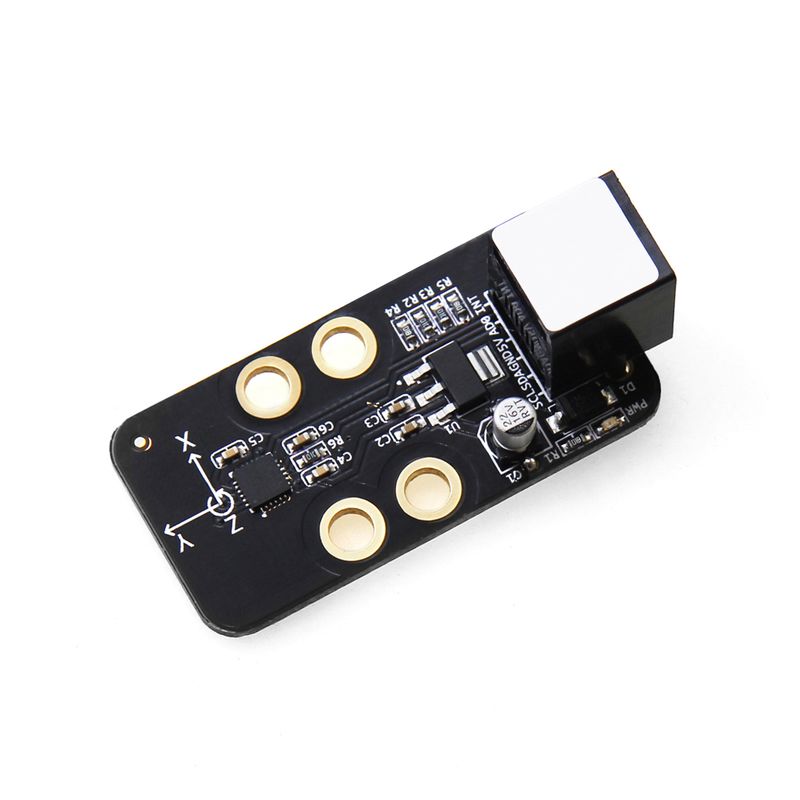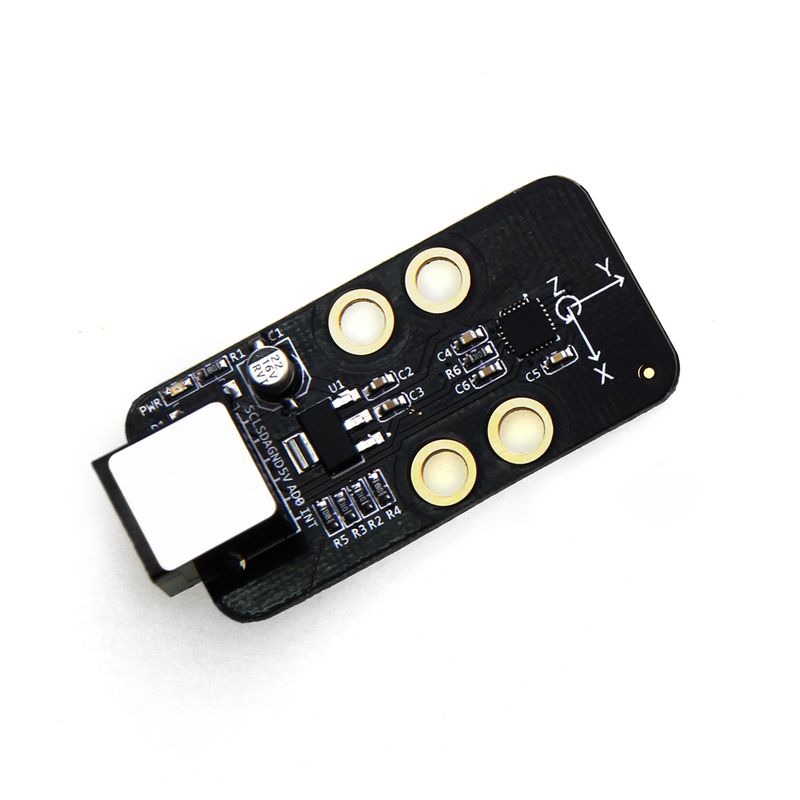Makeblock Sensor "3-Axis Accelerometer and Gyro Sensor V1" / Accelerometer & Gyroscope for MINT Robots
€17.52
Product information "Makeblock Sensor "3-Axis Accelerometer and Gyro Sensor V1" / Accelerometer & Gyroscope for MINT Robots"
"Makeblock Sensor "3-Axis Accelerometer and Gyro Sensor V1" / Accelerometer & Gyroscope for MINT Robots"
The Me 3-axis accelerometer and gyroscope sensor is an ideal module for robot motion and posture detection. It contains a 3-axis accelerometer, a 3-axis angular velocity sensor and a motion processor, and provides an I2C port for communication. It can be used on the self-balancing cart, 4-axis aircraft, robots and mobile devices. It has the advantage of high dynamic range and low power consumption. Its white ID means it is in I2C communication mode and should be connected to the port with white ID on Makeblock Orion.
Functional characteristics
Input voltage: 5V DC
Signal mode: I²C communication
Module size: 51 x 24 x 18 mm (L x W x H)
Pin definitions
The port of Me 3-axis accelerometer and gyro sensor has 4 pins, and their functions are as follows:
Connection
Connection with Rj25 Since the port of Me 3-axis accelerometer and gyro sensor has white ID, you need to connect the port with white ID to Makeblock Orion when using RJ25 port. Using the Makeblock Orion as an example, you can connect it to ports #3, #4, #6, #7, and #8.
Connection with Dupont Wire If the module is connected to the Arduino UNO baseboard using the dupont wire, the SCL and SDA pins should be connected to the I2C port, i.e. port A5 and A4 respectively.
Principle
The Me 3-axis accelerometer and gyro sensor integrates a 3-axis accelerometer, a 3-axis angular rate sensor (gyro), and a digital motion processing engine (DMP), and outputs the integrated 9-axis synthetic data as a single data stream to the application client via the I2C port. The 3-axis accelerometer can measure the change in acceleration in the X, Y, and Z axes. By sensing the total inertial force in a certain direction, the accelerometer can measure acceleration and gravity. The 3-axis accelerometer means it can detect the motion or gravity of an object in 3D space. The accelerometer can be used to measure gravity g. When the module is still and completely motionless, the force exerted on it by the Earth's gravity is approximately 1 g. If it is placed vertically, it will detect the force acting on it along the Y axis, about 1 g. If it is set up at a certain angle, it detects that the force of 1 g is distributed along different axes. When it is in motion or vibrating in 3D space, the Me 3-axis accelerometer and gyro sensor will detect the force of more than 1 g in one or more axes as well as acceleration. Velocity and displacement can be determined by integrating the acceleration. When an object rotates around an axis, the angular velocity is generated. The 3-axis angular velocity sensor (gyro) can detect the change in angular velocity in the X, Y, and Z axes. The motion processing engine can output data directly through the I2C port, which reduces the load on the peripheral microprocessor and avoids complicated filtering and data synthesis.


